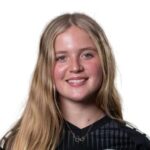For Matanuska Soccer Club, a long way to go, but they’re getting there
By Jimmy LaRoue
For most teams, getting to the 2013 Jefferson Cup wasn’t a complicated one. But none of them were from the Matanuska Soccer Club of Wasilla, Alaska.
While many punched up the directions on their GPS devices, or had flights that lasted maybe a few hours at most, Matanuska’s 27 players, two coaches and the few parents who made the trek faced a 15-hour aerial journey to Richmond International Airport.
They started last Thursday morning in Anchorage, then flew to Denver and Chicago before getting to Richmond, and then driving another hour south on Interstate 64 to Williamsburg, where they were based for the three-day weekend. On the return leg Monday, they added a stop in Newark, N.J. on their way back home.
For perspective, to drive from Wasilla to Williamsburg would involve 4,381 miles and 76 hours of driving, according to Google Maps, assuming good weather throughout.
The travel is not unusual; the players, though, are unusually mature for their ages. To find meaningful games for the Alaskan team involves going out of state–all the time.
“That’s been the kind of standard,” said Matanuska coach and technical director Troy Letherman. “We have a pretty unique group, and I’m talking about the 98s. They’ve done a lot of travel. We’ve just tried to get them into better tournaments where they can compete.
It’s also a challenge for the parents of the players back home to follow the team. With most of them unable to travel to watch their children play, they rely on social media to keep tabs on how the teams are doing, even if it means waking up at 4 a.m., as they did while the team was in Williamsburg, to follow Twitter updates about the matches.
Letherman, said it has been some time since his U-13 and U-15 teams have found competitive games in the state. The U-15 team, in particular, already dominates teams in that age group, and he said a U-23 team in the area doesn’t provide it with stiff enough competition either.
“Really, we don’t get any quality games in Alaska anymore,” Letherman said. “By far, they are the best team.”
The U-15s are paving the way for the rest of the club, he said. The club travels all across the country and has traveled to the Gothia Cup in Sweden. The Jefferson Cup is the club’s first trip to the East Coast.
“As far as we’re concerned, this is the best tournament in the east,” Letherman said.
But even that’s not enough.
Due to the harsh Alaskan weather, the club can only play outdoors from mid-to-late May through September.
“That’s the only regular 11v11 full-sided soccer that we get,” Letherman said. “Otherwise, we have a dome with a full field and a couple of smaller indoor facilities where they play five-a-side. They train year-round but we just don’t get the games.”
With the travel for a normal team cost-prohibitive, for a team such as Matanuska, it’s even more so.
The club travels three to four times a year, depending on the budget, but for the players, it cost between $1,200 to $1,500 each to get to Richmond. The flight alone was $700 per person. For the 27 players, it meant an overall expense of $32,400 to $40,500, not counting costs for the two coaches and the handful of parents on the trip.
“Altogether they play 20 to 25 full-sided meaningful games in a year,” Letherman said. “That’s about all they get. We just have to be innovative.
“There’s nowhere we can drive to. It would take us 48 hours just to drive to Seattle. Everything is flights and hotels.”
Ben Sande, who plays forward on Matanuska’s U-15s, said the difficulty of travel and long trips are overrated.
“It’s not too bad, because travel’s pretty easy,” Sande said. “It depends on where we’re going, obviously. We have to get our legs back from under us after the longer flights.”
Because of the costs, Matanuska’s logistical and competitive challenges means it has an inherent disadvantage that few others could contemplate. Still, Letherman and his players don’t offer excuses, don’t want sympathy and don’t seek trophies.
“We have to get value from our trips and that’s always been the focus,” Letherman said. “We’ve never wanted to take them somewhere we’re pretty sure we can win. We’re not interested in coming home with trophies.”
Letherman said the club tries to schedule games for their teams in which they’re going to be tested.
“We’re always trying to take them to a level where it’s a little beyond where they are,” Letherman said.
Before Letherman became the director of the club five years ago, the teams didn’t travel. He changed that immediately, taking the then U-11s (now U-15s) on two trips, putting the travel into motion and doing it ever since.
The younger U-13s are following in the older team’s footsteps.
“They’re traveling together,” Letherman said. “They’re in a lower division. They’re doing pretty well but they’ve had les success out-of-state. They’re kind of piggybacking on the 15s getting into tournaments, and they’re just starting to get their own way, [but] they need to be able to get into better tournaments on their own.”
But the progress the club has made already is starting to pay dividends.
The club has an affiliation with Crossfire Premier that allows it to send players to the Washington-state club’s ECNL and Development Academy teams and camps. In 2012, the first year of the affiliation, 18 Matanuska players appeared with Crossfire teams.
One of the club’s players, goalkeeper Jaeden Chew, has appeared four times this season with Crossfire’s U-17 ECNL team (9-0-1 overall and 4-0-0 in the Northwest Conference), and two of the club’s 98s will be joining Crossfire’s Development Academy team full time in the summer, including Region IV Olympic Development Program attacking midfielder Drini Redzepi and midfielder Bailey Letherman, who has been to U.S. Club Soccer’s id2 camp twice.
As a father, it’s difficult to let him go, but Troy Letherman said it is what his son needs to develop as a player.
“It really is difficult,” Letherman said. “For three months, he played with Crossfire in the fall, just having the kid away from home. It’s so much the right thing, especially for those two players. … They need a level to move onto. That’s really why we did the affiliation, because of players like that.”
Letherman said the club has the ability to develop its own players, but when they get to age 14, “there’s nowhere else to go.”
Redzepi, 15, the son of Albanian parents and also a reputable cross country runner, credits them and his coaches with his success. He’s been rated one of the top soccer prospects in the Pacific Northwest region. Still, he said a common question he gets is “how we play soccer in Alaska.”
“They’re just like, they want to know more,” Redzepi said. “It’s interesting, because no one expects a soccer from Alaska because it’s just ice there.”
He said he enjoyed the atmosphere at the Jefferson Cup. He said that out west, the speed of play is quicker, with more balls played on the ground, while out east, he said it has been more physical.
“I think it’s been really stiff,” Redzepi said of the competition. “Really good, really different, the style of play, but I like it.”
Sande, Redzepi’s teammate on Matanuska’s U-15 team, said East Coast teams, from what he has seen, tends to play “more simple [and] effective,” while out west, the play is more technical and skilled.
Sande, who hopes to play college soccer, said he has been playing for eight years, kicking around in his Wasilla home’s backyard.
“Ever since then, I’ve always played the game and enjoyed the game,” Sande said.
While the U-15s draw their player pool from the Wasilla and Anchorage areas, the U-13s represent a larger swath of Alaska.
The feedback on the club’s progress has pleased Letherman.
“It’s really positive, especially in the west where we’ve become a little better known,” Letherman said. “The boys play well, and we have some girls’ teams that play well. It’s fun to watch. It’s attractive soccer. We’re not the most defensive team.”
But while Matanuska has been unheralded and underestimated coming into the tournaments in which it plays, it has been a challenge too.
“We’ve got a lot of highs and lows to go with that,” Letherman said. “We’ve taken our lumps in developing, but they’ve had a lot of good results that have impressed people.
“You can tell people are surprised. You can tell five minutes into the game. I don’t think Alaska draws a lot of respect. I think a lot of people have penciled in wins. You can tell some people are surprised by the end of the game.”
Letherman, though, understands this, especially when his teams show up at a tournament for the first time, especially since other Alaskan teams have been “hammered,” he said, at previous tournaments.
“I tell them they have to make their own respect,” Letherman said. “Nobody’s going to respect them until they show up and play. We expect it and have no problem with it.”
The U-13s and U-15s made their own respect at the Jefferson Cup.
The U-15s were in contention for a spot in the finals of the Boys U-15 Platinum bracket, playing to a scoreless tie in its opening Group B match against SYA Cardinals 97 Red of Virginia and then picking up a 3-2 win over Triangle FC 97 Navy of North Carolina in the second game Saturday.
With a chance to reach the final, Matanuska fell 2-1 to Soccer Plus Academy PSC Heat NPL-97 of New York.
The piggybacking U-13s, though, had sweet success in the Boys U-13 Classic bracket, going undefeated at 3-0-0 in Group A play, outscoring opponents 8-1 in the process. Matanuska opened with a 4-0 win over Richmond Strikers Elite, then picked up a narrow, 1-0 shutout of River City Rovers 99 NPL of Kentucky.
On Sunday, Matanuska’s U-13s defeated Charlotte United FC 99 Gold 3-1 to reach the final, where they held off Triangle United Gold in 5-4. The two teams went a combined 5-1-1 at the Jefferson Cup.
Sande says he believes Alaskan soccer teams and players can garner more respect in the future.
“I think soccer in Alaska is definitely growing,” Sande said. “In the next few years or so, we’re definitely going to get some younger teams coming up, but it’s still in the developing stages.”
Said Letherman: I would just say it’s all a plan that we put in years ago for these guys with the resources to develop them as a team and as individuals, most importantly. And we’re just following that plan.
Photo gallery: Matanuska AKFC 00s vs Triangle United 99 Gold
Videos of Matanuska AKFC 00s in action:
Matanuska Soccer Club on Facebook
Matanuska Soccer Club on Twitter:
@MatanuskaSC
Matanuska AKFC Blog: http://akfcblog.wordpress.com/
Matanuska website: http://matanuskasoccerclub.org











